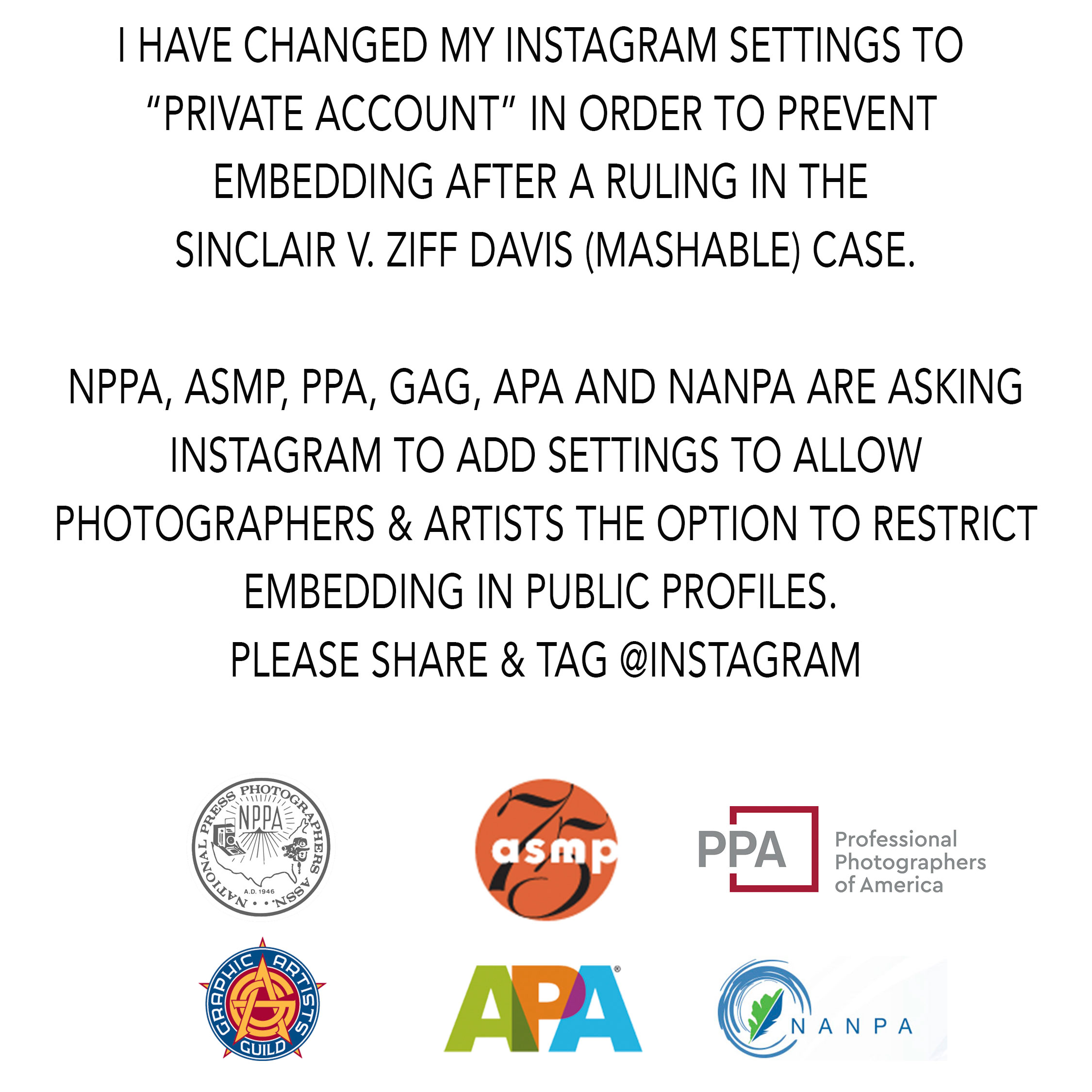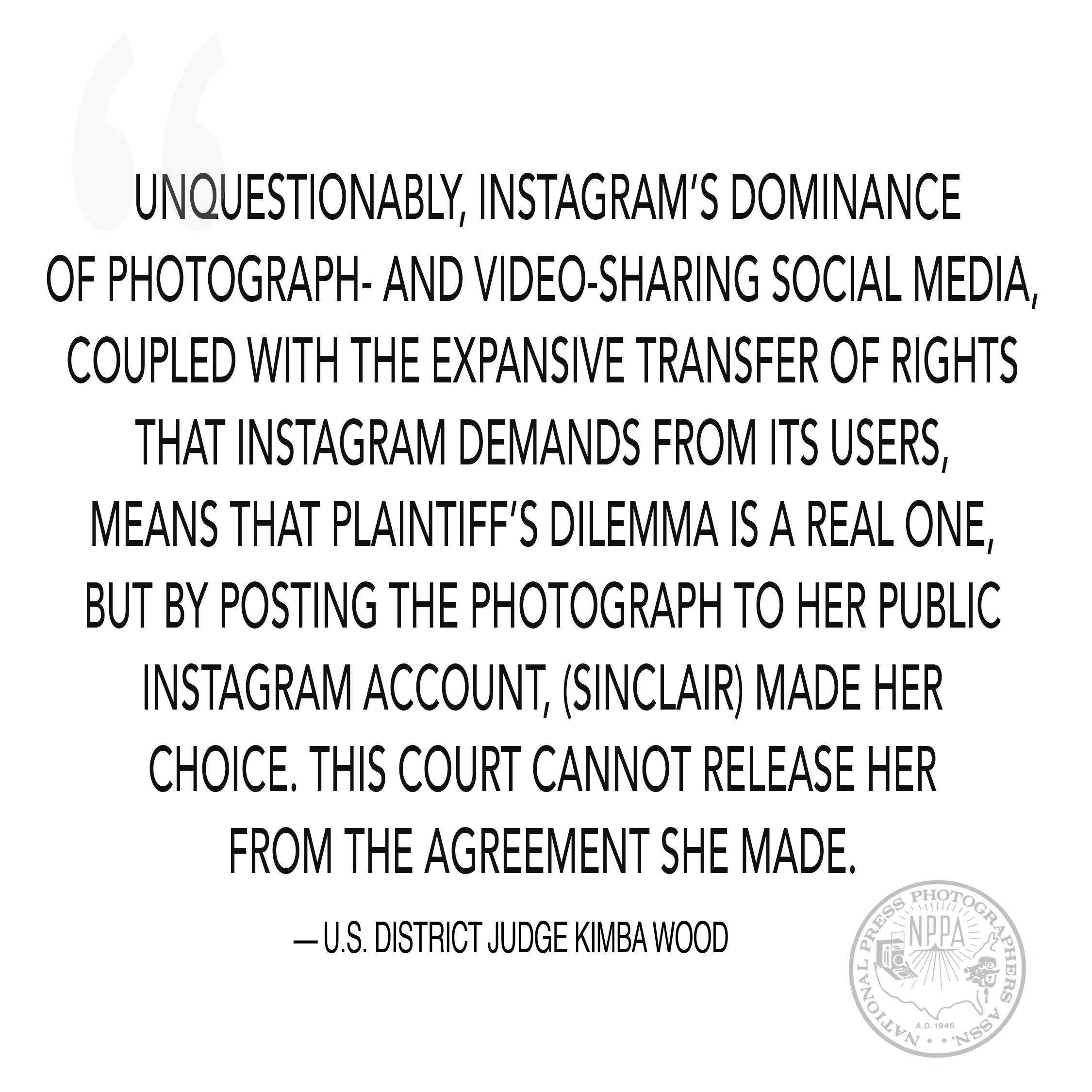28 Apr A $200-Million Publisher Can Embed Your Instagram Images – What You Can Do About It
An opinion rendered in a court in the Southern District Court of New York has widespread ramifications for visual artists who use Instagram to publicize and promote their work. The court dismissed a lawsuit brought by photographer Stephanie Sinclair, who contended that online magazine Mashable infringed her copyright when they embedded one of her images that had been posted on Instagram. The decision by the court held that anyone can embed images posted to a public Instagram account via their API without getting permission from the copyright holder.
The Case: Sinclair vs. Mashable
Sinclair vs. Ziff Davis, LLC and Mashable, Inc. came about after Pulitzer Prize-winning photographer Stephanie Sinclair was contacted by Mashable. Mashable wanted to license one of Sinclair’s photographs for the paltry sum of $50. Sinclair turned down the offer. Mashable, a global, multi-media publisher of technology, lifestyle, and entertainment news, is estimated to be worth $200 million. The company certainly had the means to afford an appropriate licensing fee, particularly for a photographer of Sinclair’s renown.
Not to be deterred, Mashable resorted to using Instagram’s embedding API, and her photograph appeared in an article about women photographers. Sinclair demanded that Mashable remove the photograph and compensate her for the use of her photograph. When Mashable refused her requests, she brought a copyright infringement lawsuit against them and their parent company, Ziff Davis. Countering Sinclair’s argument that they didn’t have a license to use the photograph, Mashable’s attorneys cited Instagram’s terms of use. Those terms state that Instagram has the right to sublicense public images posted to Instagram. The platform’s policies permit users of the Instagram API to embed images posted publicly onto their websites.
The case never reached a trial. In response to a motion for a summary judgement, the court ruled that Sinclair didn’t have standing to bring a copyright lawsuit. The judge agreed that Sinclair’s copyright was not violated when Mashable used Instagram’s API to embed her image in their article. The court also rejected Sinclair’s argument that Instagram’s complicated and contradictory terms of use invalidated their sublicensing right. While agreeing that the documents could be simpler, the judge pointed out that, in establishing a public account on Instagram, Sinclair agreed to their policies.
What This Means for Visual Artists
In her article, “Artists/Photographers Alert: Any Website May Be Legally Entitled To Embed Your Instagram Images – 5 Things You Can Do About It”, attorney Linda Joy Kattwinkel outlines steps visual artists can take:
- Watermark your images.
- Change your Instagram settings to private.
- Remove licensed images from social media.
- Don’t use social media as your online portfolio.
- Tell Instagram to change its rules.
Point number three is an important one that many visual artists overlook. Since social media sites such as Instagram and Facebook claim the right to sublicense images posted publicly on their platforms, an artist cannot promise a client an exclusive right to the work. As Sinclair’s case shows, that work might appear via an embedding API on a website. (Read the full article for a discussion of the merits of each step, as well as a good recap of the case.)
ASMP Campaign: Asking Instagram to Change the Rules
Kattwinkel’s article touches on a campaign started by ASMP and NPPA, and joined by the Graphic Artists Guild plus five other photography associations. In light of the Sinclair decision, many visual artists are uncomfortable keeping their Instagram accounts public. NPPA created two graphics which visual artists can post on Twitter and Facebook. One displays a quote from the decision, highlighting Instagram’s dominance, and, for those who take that step, the second explains the decision to make their account private.
The problem is that many visual artists will find it difficult to forego a public Instagram account. To address that, ASMP and NPPA identified changes Instagram can make to the platform which would address the issues raised by the Sinclair decision. ASMP sent a letter to Instagram on behalf of the associations (and visual artists) asking them to take three steps:
- Enable users (both individual and business accounts) to restrict embedding of their images, both by individual image and account-wide;
- Change its terms of use and platform policies to prevent users from shielding themselves from liability based on Instagram’s policies; and
- Conduct an “open and frank dialogue” with creators and the associations representing them.
Similar rights management tools already exist on social media platforms. For example, YouTube permits managers of video accounts to disable embedding on individual videos. Until (and if) Instagram implements similar controls, visual artists should follow the practices outlined by Kattwinkel’s article. They can also publicize their concerns with Instagram’s policies through social media posts, utilizing the graphics which were created and linking to this and ASMP’s articles


